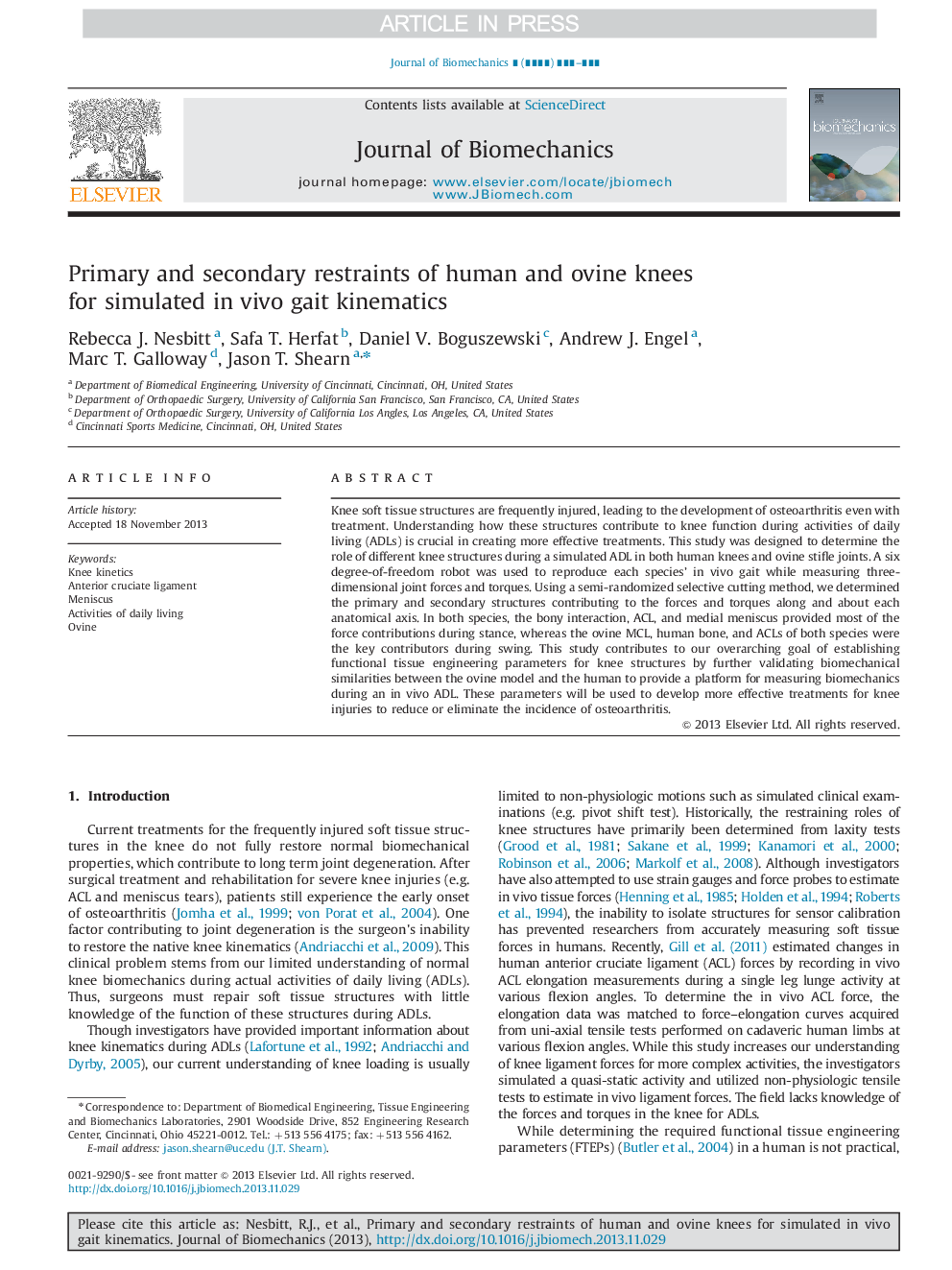| Article ID | Journal | Published Year | Pages | File Type |
|---|---|---|---|---|
| 10432062 | Journal of Biomechanics | 2014 | 6 Pages |
Abstract
Knee soft tissue structures are frequently injured, leading to the development of osteoarthritis even with treatment. Understanding how these structures contribute to knee function during activities of daily living (ADLs) is crucial in creating more effective treatments. This study was designed to determine the role of different knee structures during a simulated ADL in both human knees and ovine stifle joints. A six degree-of-freedom robot was used to reproduce each species' in vivo gait while measuring three-dimensional joint forces and torques. Using a semi-randomized selective cutting method, we determined the primary and secondary structures contributing to the forces and torques along and about each anatomical axis. In both species, the bony interaction, ACL, and medial meniscus provided most of the force contributions during stance, whereas the ovine MCL, human bone, and ACLs of both species were the key contributors during swing. This study contributes to our overarching goal of establishing functional tissue engineering parameters for knee structures by further validating biomechanical similarities between the ovine model and the human to provide a platform for measuring biomechanics during an in vivo ADL. These parameters will be used to develop more effective treatments for knee injuries to reduce or eliminate the incidence of osteoarthritis.
Related Topics
Physical Sciences and Engineering
Engineering
Biomedical Engineering
Authors
Rebecca J. Nesbitt, Safa T. Herfat, Daniel V. Boguszewski, Andrew J. Engel, Marc T. Galloway, Jason T. Shearn,
